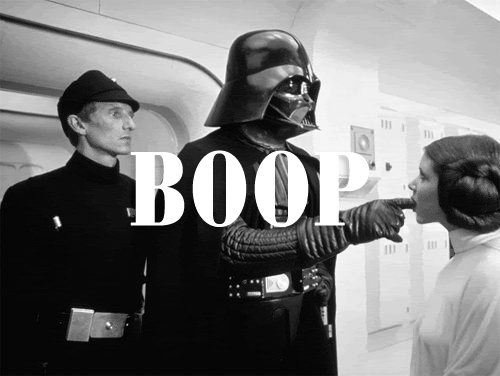 |
| Darth Vader shows up even before Luke, and boy is he a jerk! |
You never get a second chance to make a first impression, or so says the ubiquitous “They”. An effective introduction of a villain can help make the difference between a riotous adventure driven by rivalry and a crystal clear objective, and a long, slogging campaign full of uncertain choices and confusion.
Here are a couple of recommendations for making that first appearance of your big baddie count for all it’s worth.
1. Introduce the villain early. Fantasy novels and video games often bring out the bad guy right at the beginning. Many books have the luxury of presenting things from multiple points of view. Authors like R.A. Salvatore take advantage of this to introduce the main antagonist as early as the prologue--often before they’ve even introduced the hero. This helps set the tone for the entire work, because everyone knows that something is rotten in the state of Denmark... or wherever.
2. Make the villain overpowering. ROFL Initiative reader, Matt made an excellent suggestion in the comments on G is for Getaways. Making the villain far more powerful (and obviously so) than your heroes upon introduction does a couple of valuable things for your story. First, it helps ensure that your heroes don’t immediately try to obliterate your main antagonist. If they do try, a hero lost early on will be less likely to cause grief than one that has absorbed a lot of TLC. Second, making the villain a force to be reckoned with gives the players something to strive for in their character growth. “Become skilled enough to defeat the overwhelming powerhouse” is the distilled essence of almost every sports movie ever made. It also worked for Inigo Montoya.
A power imbalance can also give the heroes some breathing room to start growing their own power immediately after their introduction. The villain might write them off as but a nuisance, ignoring their early efforts, but as the heroes’ power grows, more of the villain’s attention begins to focus on what is becoming a credible threat to his/her/its plans.
3. The villain’s villainy doesn’t necessarily need to be obvious to everyone. Perhaps the heroes catch a glimpse of the villain’s dastardly intentions, but lack the crystal proof to bring down someone who is otherwise an upstanding pillar of society. Finding the proof and getting the clearance to openly go after a villain can be part of the heroes’ arc.
4. Nor does the villain necessarily need to be there in person. Refugees telling outlandish tales of a barbarian tyrant on the march can be enough to establish a sense of antagonism, as can malicious minions sent by their master. If done well, such introductions by proxy can establish a clear villain, while retaining some mystery and keeping the big bad out of immediate harm.
I would suggest erring on the side of telling too much in this situation. In my game, for instance, the heroes began to encounter a mysterious creeping blight, but it took them over a year (in real time) to figure out where it was coming from, much less what was causing it. In hindsight, this seems the wrong way to go about such things as it periodically caused my players to become frustrated in a “What now!? When will this blight quest ever end!?” sort of way. Believe me, if you reveal the answers to these questions early, but stick to some of the other recommendations, your quest will feel plenty epic.
Hopefully this will provide some inspiration you can use towards making your games or stories rollicking, edge of your seat thrill-rides, full of sex, death and explosions... not necessarily in that order.

No comments:
Post a Comment